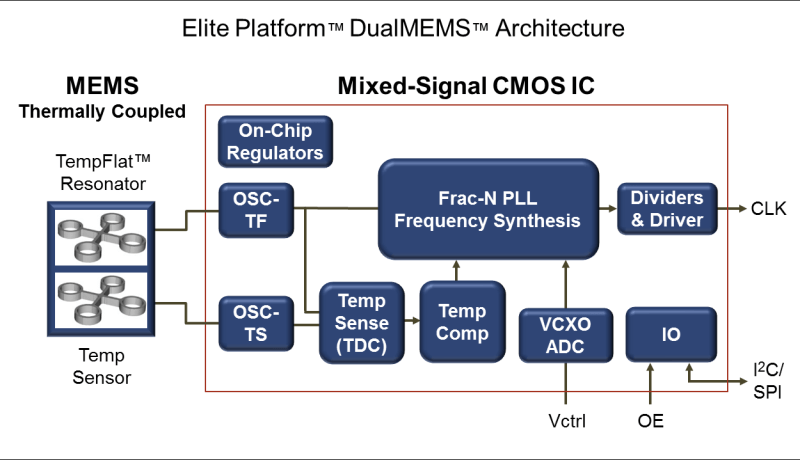Extremely precise MEMS temperature-controlled oscillators feature ±100 ppb frequency stability
September 28, 2016
on
on

Global Navigation Satellite System (GNSS) receivers, 4G/5G networks and Synchronous Ethernet are all examples of applications that need very precise timing for synchronization, time-of-flight calculations, and the like. Not only is high precision important, stability under all circumstances is too as this kind of equipment tends to be installed in places subject to extreme temperatures and temperature changes (thermal shock), vibration and unpredictable airflow.
The Elite Platform, a family of temperature compensated oscillators (TCXOs) and oscillators launched by SiTime Corporation, is targeted at this kind of difficult applications. They feature output frequencies anywhere from 1 MHz up to 700 MHz while maintaining ±100 ppb frequency stability (for the precision Super-TXCOs, the TCXOs achieve ±500 ppb) over a temperature range from -40 to +105 °C.
Although the ‘X’ in TCXO stands for ‘crystal’, the parts are based on MEMS technology that, according to specialists, inherently performs better in the presence of dynamic environmental conditions than quartz technology. The oscillator is based on a MEMS resonator, the temperature compensation on a MEMS “world’s most accurate” temperature sensor.
The Elite Platform, a family of temperature compensated oscillators (TCXOs) and oscillators launched by SiTime Corporation, is targeted at this kind of difficult applications. They feature output frequencies anywhere from 1 MHz up to 700 MHz while maintaining ±100 ppb frequency stability (for the precision Super-TXCOs, the TCXOs achieve ±500 ppb) over a temperature range from -40 to +105 °C.
Although the ‘X’ in TCXO stands for ‘crystal’, the parts are based on MEMS technology that, according to specialists, inherently performs better in the presence of dynamic environmental conditions than quartz technology. The oscillator is based on a MEMS resonator, the temperature compensation on a MEMS “world’s most accurate” temperature sensor.
Read full article
Hide full article


Discussion (2 comments)